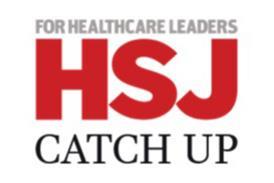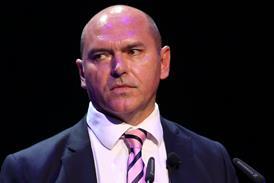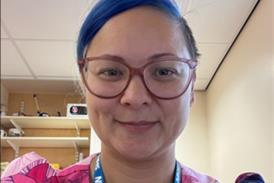Many mundane processes within outpatients’ administration are in need of a digital takeover to promote efficiency and reduce the risk of errors, writes Pete Towers
The current huge size of outpatient services creates one of the largest opportunities within the NHS to deliver outstanding clinical care, a gold star patient experience and secure some of the biggest efficiency savings.
A clear vision driven by the executive team is needed to achieve these high standards and should be delivered by a centralised outpatients’ model where expertise can be shared across all service lines.
Digital disparity
The executive team should set a focus on introducing “checks and balance” quality controls within their outpatient administrative team. This should be alongside the relatively small amount of investment needed for technology solutions to be implemented: with this an outpatients’ department can become a beacon of excellence.
The implementation of new technology within outpatients is best conducted by a team of expert outpatient managers, experts in health IT and clinicians from each outpatient service.
The executive team should set a focus on introducing “checks and balance” quality controls within their outpatient administrative team
It is tempting to rush the implementation of change, but to gain acceptance, a long-term approach spread over a number of years is favourable in order to allow users to switch to digital solutions gradually. It is important not to underestimate the effect change can have on people and the time needed to train individuals to become confident with technology.
Key pieces of technology to support outpatients – Electronic Referral System, Digital Mail, Appointment management systems, Self-Check-In with eOutcomes, Electronic and Robotic Process Automation – are designed to knit systems together (avoiding expensive integration costs) and remove human touch points.
Easing out referrals
Many of the processes within outpatients’ administration are mundane and human driven. The use of human driven mundane work is both highly expensive and results in a high risk of errors. Using RPA efficiency savings, quality gains are easily achieved – robots can perform the same task repeatedly without getting tired or distracted and run 24 hours a day without needing to stop. One software robot, before its speed is considered, is the equivalent of 5.3WTE administrators.
The next step for e-RS must be consultants and GPs engaging together; first to develop referral templates to ensure good quality referrals and second pass on knowledge to empower GPs to work-up patients prior to their first appointment with a specialist to remove the “dead” time in a patient’s pathway between the referral and first appointment.
Appointment notification has historically been by post through a patient’s letter box. The next step is to make delivery of appointment notifications by electronic methods commonplace. This technology is widely available through outsourced mailing providers and appointment reminder services providing cost savings, speed of delivery and greater traceability.
Appointment reminder providers should perhaps now be known as appointment management providers through the services they can now provide above basic appointment reminders:
- Referral and appointment notification
- Appointment reminders, following rules about rescheduling
- Patient choice of new appointment when rescheduling
- Management of partial booking with patient choice of appointment
- Short notice appointment booking
Appointment management providers can offer efficiency saving to trusts through reduced DNA rates and increased clinic utilisation through filling clinic slots made available through cancellations.
When a patient arrives at a hospital clinic, they can either be greeted by a receptionist or Self-Check-In kiosk. The label Self-Check-In is something of a misnomer as available solutions offer so much more now. The greatest benefit of Self-Check-In solutions can be found in eOutcome modules.
eOutcomes ensures clinic outcomes are recorded accurately and fully, instantly, by removing the administrator touch point between clinician and Trust Patients Administrative System. By improving accuracy trusts can reduce the risk of patients coming to harm, poor performance reporting and lost income.
Up the ante on technology
Other introductions into outpatients should be scribe-to-text technology and speech-to-text technology. Scribe-to-text to allow clinicians to handwrite notes or draw information that can be directly inputted into a patient’s electronic notes.
This gives the advantage of speed of clinician information recorded into a patient note, which is clear for all to read. Speech-to-text technology allows for fast and accurate dictation of clinic outcome letters increasing the speed of communication to a patient’s general practitioners. Both these solutions also offer efficiency savings for trusts.
To meet NHSE’s plans far more technology will need to be introduced into outpatient models and relying on telephone or video appointments will not be enough
These actions and IT solutions do not assist trusts to meet NHSE’s plans to dramatically reduce the number of face-to-face outpatient appointments. They do, however, help to set the foundations for the changes needed by improving quality within outpatient departments, and by improving clinician and patient confidence in technology.
To meet NHSE’s plans far more technology will need to be introduced into outpatient models and relying on telephone or video appointments will not be enough. Models will have to include artificial intelligence embedded into new technology where human oversight is not always a given.
For this to happen confidence needs to be built into healthcare technology to allow clinicians to feel safe so that trust systems can manage their patients and enable patients to feel safe about being managed by a non-human.






























No comments yet